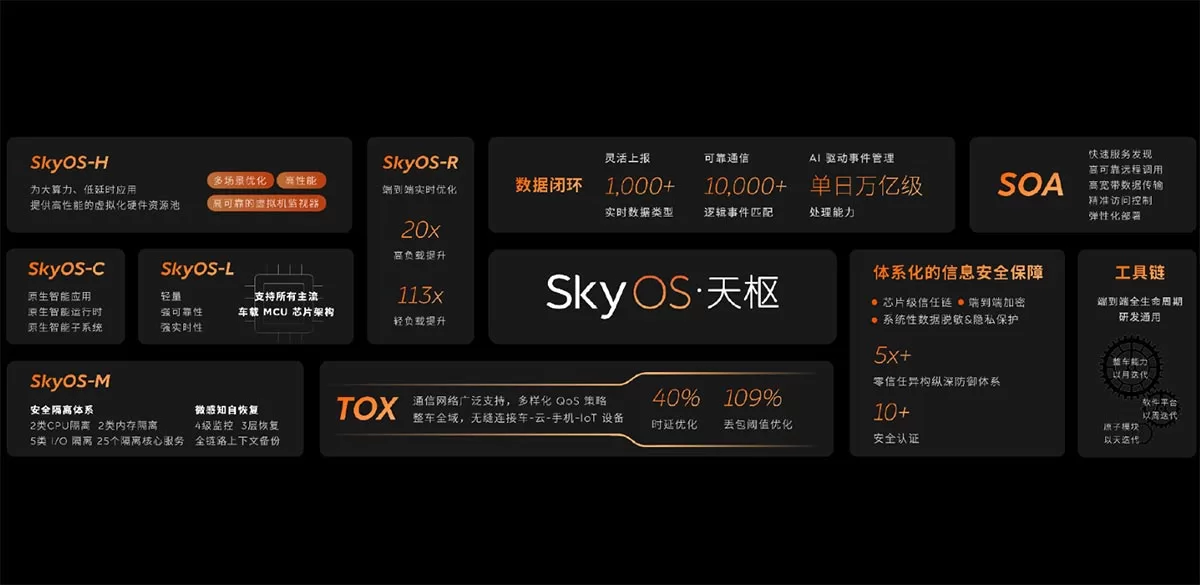Nio's Shenji NX9031 chip has successfully taped out, marking a significant advancement in its autonomous driving chip development.

Nio (NYSE: NIO) shared its latest research and development results at the Nio IN 2024 Tech Day event today, revealing where the company's R&D investments are being spent.
The electric vehicle (EV) maker unveiled progress on its autonomous driving chip, officially launched its SkyOS vehicle operating system, and launched its second-generation Nio Phone smartphone.
Shenji NX9031 chip

Nio's Shenji NX9031 autonomous driving chip, the industry's first high-level smart driving chip to be manufactured using a 5 nm process, has been successfully taped out, William Li, founder, chairman and CEO of the EV maker, announced at an event today in Shanghai, where the maker is headquartered.
Tape-out is a technical term used in the chip industry, which refers to the process of transforming a circuit design into a chip that can be produced on an assembly line after the chip design has been completed.
After a successful tape-out, a chip prototype can begin mass production if it passes subsequent tests.
Nio unveiled the Shenji NX9031 at Nio Day 2023 held on December 23, 2023, and the chip will be used in the ET9 executive flagship sedan, which is already available for pre-order but deliveries won't start until the first quarter of 2025.
Li showed off a prototype of the Shenji NX9031 chip at today's launch event, but didn't mention whether TSMC, Samsung, or any other foundry will be manufacturing the chip.
Li demonstrated the image processing capabilities of the Shenji NX9031 chip's ISP (Image Signal Processing) unit at the event, showing that the unit's strengths, including AI noise reduction algorithms, allow the cameras to more clearly recognize objects in its surroundings in low light.
One Shenji NX9031 chip is comparable to the performance of four industry flagship chips, Li said.
Li didn't mention the name of the flagship chip today, but he said at last year's Nio Day event that a single Shenji NX9031 has comparable computing power to four Nvidia Drive Orin X chips. Nio's current NT 2.0 platform-based models come standard with four Orin X chips for a total computing power of 1,016 Tops.
SkyOS operating system

Nio officially launched its full-domain operating system, SkyOS, today and gave a detailed overview of its architecture and performance.
The company unveiled SkyOS at its first Nio IN event last September, when it said it was China's first smart electric vehicle operating system.
SkyOS is characterized by high bandwidth, low latency, large computing power and high reliability, said Wang Qiyan, vice president of digital systems at Nio, at today's event.
The communication latency of SkyOS can be as low as less than 1 millisecond, which is much lower than Linux solutions, Wang said.
For users, low latency means faster system response and shorter braking distances in an emergency, Wang said, providing an example.
In addition, SkyOS has complete control over the data collection and flow links between the various intelligent systems, which allows information security to be ensured more effectively, Wang said.
2nd-gen Nio Phone

Nio has launched the second-generation Nio Phone today, and the Android phone is priced the same as its predecessor, with the starting price remaining at RMB 6,499 ($900).
Specifically, the device offers three options:
The 12 GB RAM with 512 GB storage version is priced at RMB 6,499.
The 12 GB RAM with 1 TB storage variant is priced at RMB 6,899.
The 16 GB RAM with 1 TB storage EP Edition is priced at RMB 7,499.
These three RAM and storage combinations are the same as the first-generation Nio Phone, which was launched on September 21 last year, and the corresponding versions are also priced the same.
The second-generation Nio Phone features a 6.82-inch curved screen customized by Nio at Samsung, which has a higher cost, according to the company.
The smartphone is powered by a Qualcomm Snapdragon 8 Gen 3 chip and has an improved cooling system that can easily handle mainstream mobile games, according to Nio.
Nio has brought new capabilities for the second-generation Nio Phone to interact with vehicles, including the Nio Link feature, which is capable of calling up the vehicle's external cameras for live video streaming on supported mobile apps.

The device comes with NOMI GPT, a virtual voice assistant that incorporates AI (artificial intelligence) technology for a more innovative experience.
The second-generation Nio Phone, like its predecessor, continues to ban any pop-up ads and has no third-party sponsored pre-installed software, both of which are significant sources of revenue for China's dominant smartphone makers.
Nio today announced that in addition to the Nio App, those interested can also purchase the second-generation Nio Phone on channels including e-commerce platform JD.com and short-form video platform Douyin, unlike previously when the Nio Phone was only available on the Nio App.
The second-generation Nio Phone began to be showcased in 93 Nio Houses today.
Banyan 3 system
Nio today announced the Banyan 3 system, saying it is its first intelligent system based on underlying AI capabilities.
Unlike SkyOS, which is responsible for managing vehicle components, the Banyan system is a user interface where the user communicates with the vehicle.
Nio's vehicle user interface was originally named Nio OS. On August 31, 2021, the company announced Nio OS version 3.0.0, which began with new architectures.
Models on the NT 1.0 platform utilize the Aspen software architecture and models on the NT 2.0 platform utilize the Banyan software architecture.
The Banyan 3 system brings support for light apps and WeChat mini-programs, making a large number of popular lifestyle applications, including McDonald's and WeChat Reader, available on the vehicle's center screen.
The system also brings better driving comfort, a better music experience, and optimized karaoke functionality to the vehicle.
Nio will start recruiting beta testers for the Banyan 3 system next week and expects to push the formal version to users by the end of August.
Smart driving model
Nio today announced the Nio World Model (NWM), which it said is the first smart driving world model.
The NWM is a generative smart driving model that can reconstruct the physical world form through understanding data to have the ability to imagine, extrapolate and make decisions.
The model can derive 216 possible scenarios in 100 milliseconds and find optimal decisions from them, according to the company.
As a generative model, NWM can generate a 120-second composite video based on a 3-second driving video.
New smart driving technology architecture
Nio today announced NAD Arch 2.0, which it said is an end-to-end architecture that introduces a world model.
The architecture can rely on raw sensor data to generate driving decisions, resulting in less information loss and greater predictive power, according to the company.
NAD Arch 2.0 enables an easier, safer and more human-like smart driving experience, Nio said.
($1 = RMB 7.2511)




